EGYPT
Plants and Animals

Plants and Animals
Cities in EGYPT
| El gouna | Hurghada | Makadi bay |
| Marsa alam | Sharm el sheikh |
Plants and Animals
Plants
The mudflats, especially east of the Nile, are mainly overgrown with scrub. Most of the desert is virtually bare.
Typical desert plants include rough grass, tamarisks and dwarf mimosas. Date palms bloom in the Nile Valley and in the oases, where groundwater is found close to the surface. Incidentally, there is almost only a cultural landscape along the Nile, where millions of date palms grow and vegetables and grain are grown.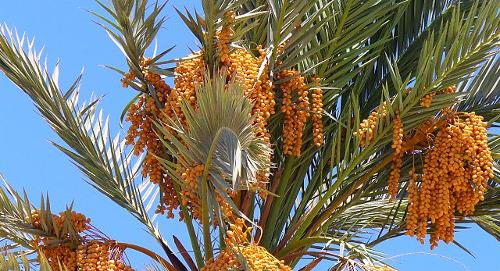 Date palm, very common in EgyptPhoto: B. Simpson Cairocamels, CC 3.0 no changes made
Date palm, very common in EgyptPhoto: B. Simpson Cairocamels, CC 3.0 no changes made
Other trees and plants can be seen here and there, including fig trees, citrus trees, mangoes, tamarindes, mimosas, cypresses and the exotic Australian eucalyptus. Roses, bougainvillea and jasmine provide color and fragrance, for example.
The protected papyrus grows along the Nile, an elegant cane and one of the symbols of Egypt.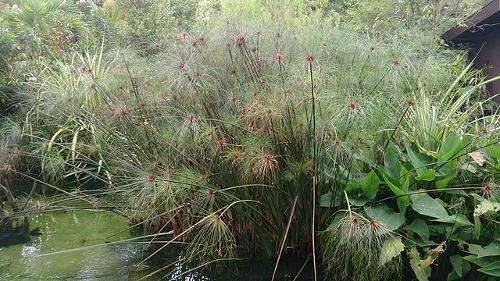 Papyrus plant, EgyptPhoto: ProjectManhattan in the public domain
Papyrus plant, EgyptPhoto: ProjectManhattan in the public domain
Animals
About 160 fish species are found in the Nile, of which the Nile perch or Victoria bass is the best known. Due to overfishing, very large specimens of more than fifty kilos are almost non-existent. These can still be found in Lake Nasser in the south of the country. Also special are lungfish, which can even survive in mud puddles.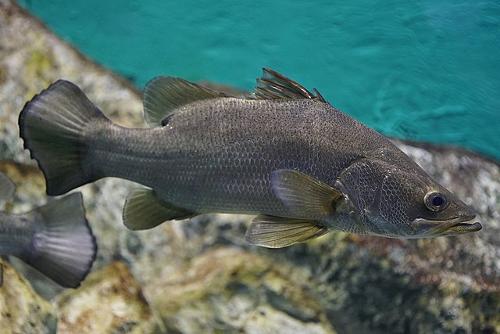 Nile perch, African snook or Victoria perch, fish from EgyptPhoto: Daiju Azuma CC 4.0 no changes made
Nile perch, African snook or Victoria perch, fish from EgyptPhoto: Daiju Azuma CC 4.0 no changes made
In the Sinai Mountains, ibex and panthers are rare. Despite the overcrowding, the desert areas are here and there still untouched. Sinai and the Red Sea coast offer some of the best scuba diving in the world.
The Red Sea is warm enough and shallow enough in places to allow coral growth. Corals are tiny polyps that cluster in colonies. When corals die, the next generation grows on top, and over time they develop into fantastic formations. The coral animals contain a lot of lime; if they die off, the calf shell remains. The Egyptian underwater world is home to more than 800 beautiful species of fish. The most common are the yellow clownfish and the reef perch, and further, among others, the masked butterflyfish, diamondfish, emperor fish and Napoleon fish. Different species of sharks live at greater depths (including tiger shark, reef shark, gray shark, leopard shark and hammerhead shark), barracudas, moray eels and stingrays.
Furthermore, sponges, seahorses, starfish, shellfish and lobsters live around the coral reefs. Dangerous species include moray eels, stonefish, scorpion fish, sea anemones, sea urchins, electric rays, lionfish and fire coral.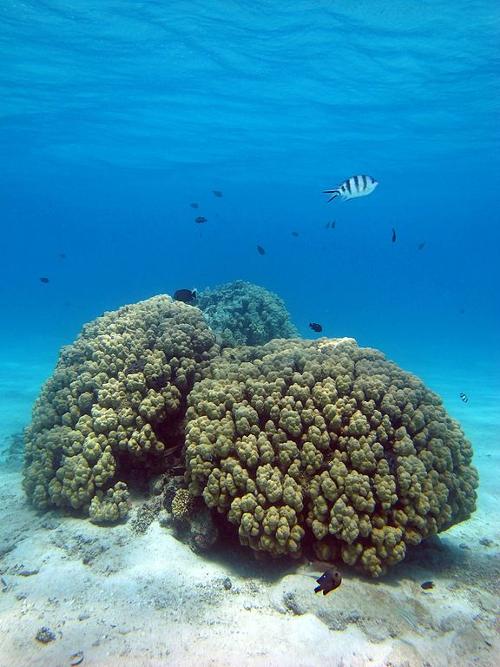 Coral in Red Sea, Marsa Alam, EgyptPhoto: Giorgio Galeotti CC 4.0 no changes made
Coral in Red Sea, Marsa Alam, EgyptPhoto: Giorgio Galeotti CC 4.0 no changes made
In the western desert areas, tourists usually only encounter ants, beetles, flies, fleas, scorpions and sometimes a herd of gazelles. Yet there are many more wild animals to be found: cheetahs, oryxes, hyenas, jackals, desert foxes, rats, hedgehogs, hares, mongoose, weasels and different types of snakes. The most famous venomous snakes are the cobra and the sand viper. Scorpions are also dangerous guests. Birds of prey such as the Egyptian vulture and various falcons can be found throughout the desert.
Desert foxes sleep during the day and only leave their burrows at night. Thanks to their excellent hearing, they can catch insects and small mammals in the dark. Oases are an ideal habitat for all kinds of animals, such as the striped hyena, the Egyptian mongoose (aka pharaoh rat) and the little green bee-eater.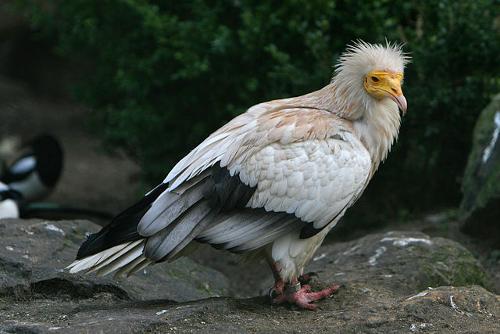 Egyptian vulture is bird of EgyptPhoto: Arjan Haverkamp CC 2.0 no changes made
Egyptian vulture is bird of EgyptPhoto: Arjan Haverkamp CC 2.0 no changes made
There are about 350 bird species in Egypt. About 150 species are permanently resident in the country, the rest are migratory birds flying to eastern Africa, or summer guests from tropical Africa. Saranik Nature Reserve was founded in 1985 at Bardawil Lake; one of the most important stopping places for birds between Africa and Eurasia. About 250 species have been observed so far, including the pink pelican, flamingo, blue heron, great egret, bittern, avocet and cormorant. Native species found here include the rare lesser kestrel, marbled duck, steppe lapwing and corncrake.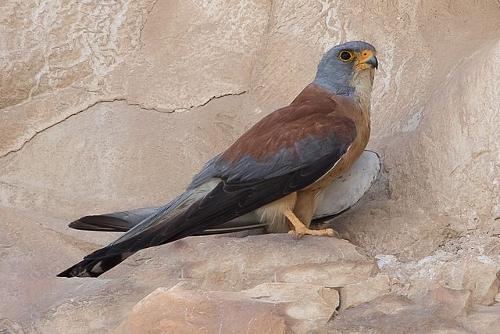 Lesser kestrel, rare in EgyptPhoto: MinoZig CC 4.0 no changes made
Lesser kestrel, rare in EgyptPhoto: MinoZig CC 4.0 no changes made
Birds that stand out are spoonbills, storks, cow egrets, pelicans, flamingos, bee-eaters, kingfishers, purplets and the striking hoopoe. Famous is the Egyptian goose, which can be seen a lot, especially in Aswan. Protected birds include the lapwing, osprey, muscovy falcon, black kite, and purple heron.
The deserts are home to different species of sand grouse and partridges. Another special feature is the crested staircase, a beautiful flightless bird, of which there are not many left because of hunting. The ostriches seem to still occur in the Western Desert and in the protected area around Gabal Elba in southeastern Egypt.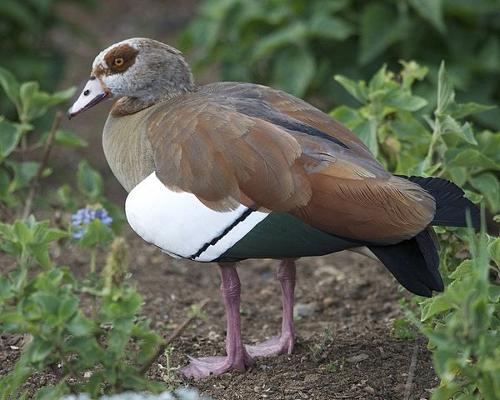 Egyptian goose, typical for EgyptPhoto: Lip Kee Yap CC 2.0 Generic no changes made
Egyptian goose, typical for EgyptPhoto: Lip Kee Yap CC 2.0 Generic no changes made
The ibis, associated with the god Thot, and frequently depicted in works of art, disappeared from Egypt as early as the 19th century.
Large mammals such as lions, elephants, giraffes and hippos (last seen in Aswan, 1816) have not been seen in Egypt for hundreds to thousands of years. Nile crocodiles are only found in Lake Nasser, Nile monitor lizards are common.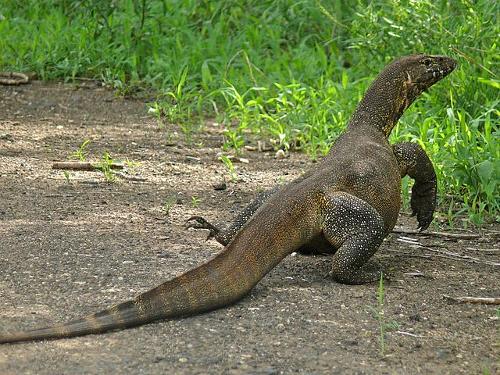 Nile monitor, biggest lizard in Africa and EgyptPhoto: Bernard DUPONT from FRANCE CC 2.0 no changes made
Nile monitor, biggest lizard in Africa and EgyptPhoto: Bernard DUPONT from FRANCE CC 2.0 no changes made
"Camels"
The Camelus dromedarius, the one-humped camel or dromedary, from Persia, is indispensable in Egypt. They are usually called camel after the Arabic "kemal".
These gigantic ungulates have for centuries, until today, provided the transportation of goods and people through the deserts of Africa and the Middle East. The camel has adapted very well to the harsh desert life over thousands of years.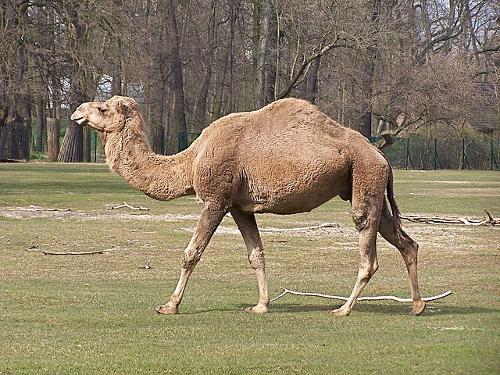 Camel, still indispensable in EgyptPhoto: Agadez, CC 3.0 no changes made
Camel, still indispensable in EgyptPhoto: Agadez, CC 3.0 no changes made
Thanks to a third, transparent eyelid, they can still see during sand storms. The legs of a camel are so flat that they do not sink into the sand of the desert. The hump on the back contains a lot of fat reserves, and no water as is often thought, allowing the animals to walk for many days without having to eat. Furthermore, dromedaries do not sweat and release almost no moisture with their faeces. This way they can withstand a higher body temperature and there is less need for cooling. On long treks without water, a camel can lose a third of its body weight, which it replenishes by drinking up to 150 liters of water in one sitting. Furthermore, a camel is also a supplier of milk, wool, leather and meat to the population.
Camels move both legs on one side first and then those on the other. They owe their nickname "ship of the desert" to that rocking walk.
Sources
Ambros, E. / Egypte
Het Spectrum
Botje, H. / Egypte : mensen, politiek, economie, cultuur, milieu
Koninklijk Instituut voor de Tropen
Dunford, J. / Egypte
Van Reemst
Grünfeld, R. / Reishandboek Egypte
Elmar
Innemee, K. / Egypte
Gottmer/Becht
Kreissl, B. / Egypte
Elmar
Laet, R. de
Egypte
Rooi, M. de / Egypte
ANWB
Sattin, A. / Egypte
Van Reemst
CIA - World Factbook
BBC - Country Profiles
Copyright: Team The World of Info